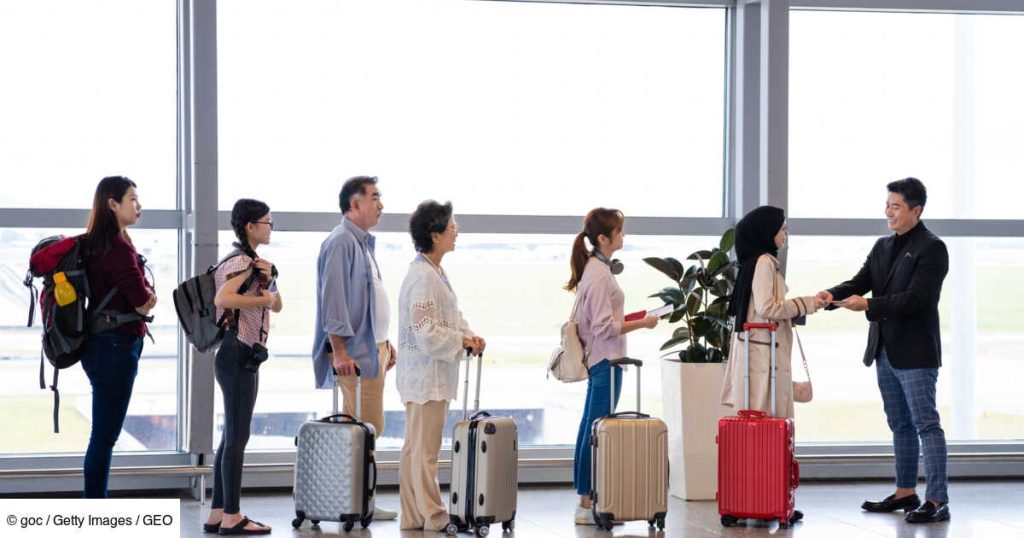We’ve all been there: standing in line at the gate, anxiously waiting to board, while a few passengers ahead of us seem to have no patience at all. It’s a common scenario in airports across the world—people instinctively lining up long before their group is called, as if the mere act of standing closer to the door might somehow speed up the boarding process. In reality, though, this often just leads to congestion and frustration. But now, a new system is being tested in U.S. airports that aims to reduce this behavior by detecting passengers who get in line too early. The goal? To streamline boarding, cut down on unnecessary delays, and make the entire process smoother for everyone.
American Airlines Introduces Technology to Detect Impatient or “Line-Jumping” Passengers
To tackle this issue, American Airlines has rolled out an innovative system designed to identify passengers who try to board early, before their assigned group is called. The technology works by using a software system that detects when a passenger boards the plane ahead of schedule. A signal is then triggered, alerting the airline staff to the situation. Importantly, this doesn’t publicly shame the passenger but instead simply provides the gate agent with the necessary information, allowing them to address the situation without causing a scene.
This technology helps prevent passenger fraud, where people who haven’t purchased priority boarding try to sneak in ahead of those who have. More importantly, it promises to improve the overall boarding experience by giving American Airlines’ team better visibility into how smoothly the boarding process is progressing.
American Airlines has already tested the system at Albuquerque and Tucson airports with promising results. The airline is now looking to expand its use to additional locations, including the busy Reagan National Airport near Washington, D.C.
The Future of Airports: Streamlining Processes with Technology
This new system is just one example of how airports around the world are evolving to meet the demands of modern travel. While addressing impatient passengers at the gate is a key concern, airports are also focused on improving other aspects of the travel experience, particularly through digitization. Many airports are now exploring ways to replace traditional paper passports with digital identification options stored directly on your smartphone.
Globally, biometric technology is becoming a central focus in airport modernization. At Changi Airport in Singapore, for example, long-term residents and citizens can now pass through security checks using facial recognition. This system is designed to reduce wait times by up to 40%, a significant improvement in the efficiency of airport operations.
In the UAE, Abu Dhabi’s airport is taking things a step further with the Smart Travel project. This ambitious initiative aims to install biometric sensors at every touchpoint in the airport, from check-in counters to duty-free shops, and even at the boarding gates. The goal is to create a fully contactless travel experience, allowing passengers to move through the airport without needing to present any physical documents. If successful, this could revolutionize air travel and set a new standard for airports worldwide.
A Step Toward a More Efficient Travel Experience
The system introduced by American Airlines is just one piece of a broader trend toward greater automation and smarter technology in airports. From facial recognition systems to digital passports and biometric sensors, the future of travel looks increasingly efficient and seamless. These technologies promise not only to make our time in airports more pleasant but also to address issues like fraudulent boarding and passenger impatience, which have long been a source of frustration for travelers and airlines alike.
As airports continue to adopt these cutting-edge technologies, we can expect faster, smoother, and more secure travel experiences. So next time you’re waiting to board, rest assured that the airline is doing its part to make the process as quick and hassle-free as possible—no more standing in line unnecessarily.



